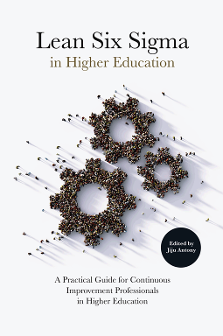
Index
Lean Six Sigma in Higher Education
ISBN: 978-1-78769-930-4, eISBN: 978-1-78769-929-8
Publication date: 30 November 2020
Citation
(2020), "Index", Antony, J. (Ed.) Lean Six Sigma in Higher Education, Emerald Publishing Limited, Leeds, pp. 223-228. https://doi.org/10.1108/978-1-78769-929-820201014
Publisher
:Emerald Publishing Limited
Copyright © 2021 Jiju Antony. Published under exclusive licence
INDEX
- Prelims
- Chapter 1 An Overview of Lean Six Sigma
- Chapter 2 Academic Leadership – Their Culture and Characteristics
- Chapter 3 Lean Six Sigma in Higher Education: State-of-the-Art Findings and Agenda for Future Research
- Chapter 4 Challenges in the Deployment of LSS in the Higher Education Sector: Viewpoints from Leading Academics and Practitioners
- Chapter 5 Readiness Factors for the Implementation and Deployment of Lean Six Sigma (or Operational Excellence) in Higher Education
- Chapter 6 Basic Lean Six Sigma Tools for Higher Education
- Chapter 7 Perceived Non-value Added Activities in the Research Grant Application Process – Through a Lean Six Sigma Lens
- Chapter 8 Voice of the Customer in Higher Education
- Chapter 9 A Lean Six Sigma Maturity Model for Higher Education Institutions
- Chapter 10 Lean Six Sigma Roadmap for Implementation in Higher Education Sector
- Chapter 11 Six Sigma and Big Data
- Chapter 12 Case Studies of LSS in Higher Education
- Index